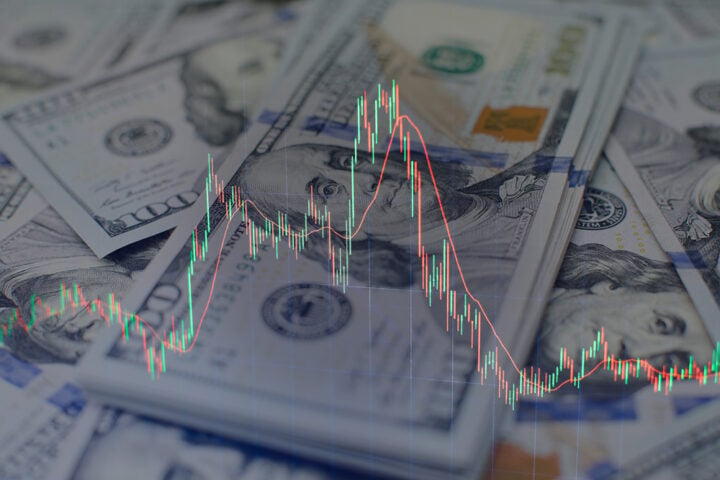A stronger-than-expected jobs report on Friday lifted U.S. stock markets, sparking renewed optimism about the economy’s strength. Investors welcomed the news of a surge in hiring, which helped reverse some of the losses experienced earlier in the week due to concerns over escalating geopolitical tensions in the Middle East.
Major stock indexes made solid gains as the market rallied. The S&P 500 rose by 0.7% in early trading, approaching its record high from earlier in the week. Similarly, the Dow Jones Industrial Average gained 266 points, or 0.6%, while the Nasdaq composite, driven by tech stock growth, climbed 1.2%.
Jobs Data Lifts Market Sentiment
The market’s recovery was largely driven by the unexpectedly robust jobs report for September. The U.S. Labor Department revealed that employers added 254,000 jobs last month, far surpassing the 159,000 jobs added in August. This news helped shift investor focus back to the resilience of the U.S. economy, which continues to perform well despite the Federal Reserve’s ongoing efforts to control inflation through higher interest rates.
The jobs data alleviated some of the concerns that had weighed on the market earlier in the week, particularly regarding the labor market’s ability to withstand the Fed’s tighter monetary policy. Fears of a sharp economic slowdown had been growing as interest rates rose, but the latest figures indicate that employers are still hiring, and layoffs remain low. This has reassured investors that the economy may be better positioned to weather the inflationary pressures than previously thought.
Impact on the Bond Market: Yields Rise
The stronger-than-expected hiring numbers had an immediate effect on the bond market, with Treasury yields rising sharply. The yield on the two-year Treasury note, which often reflects investor expectations for Federal Reserve interest rate moves, jumped from 3.71% to 3.86%. Similarly, the yield on the 10-year Treasury note, which signals longer-term economic growth expectations, increased from 3.85% to 3.95%.
With the labor market remaining resilient, investors scaled back their expectations of significant interest rate cuts by the Federal Reserve. Prior to the jobs report, many traders had been betting on a half-percentage-point rate cut in the Fed’s upcoming November meeting. However, with the new employment data in hand, the probability of such a move dropped to just 9%.
The Labor Market’s Resilience Amid Fed Policies
Despite the Federal Reserve’s aggressive rate hikes designed to curb inflation, the U.S. labor market has continued to show strength. While previous reports had hinted at a potential slowdown in hiring, the September data suggests that businesses remain confident in the economic outlook and are continuing to expand their workforces.
This ongoing strength in the job market is notable, given the Fed’s actions to cool economic activity. Typically, rising interest rates tend to slow hiring and investment, but the labor market’s resilience has provided an unexpected buffer for the economy. It suggests that while inflation remains a concern, the Fed’s policies have not been overly restrictive to the point of stifling growth.
Oil Prices and Global Markets React
Oil prices remained a key focus for investors, especially amid geopolitical tensions in the Middle East. Earlier in the week, fears of supply disruptions had pushed crude prices higher, but by Friday, those fears had eased somewhat. Brent crude, the international oil benchmark, rose modestly by 0.8% to $78.24 per barrel, while U.S. crude ticked up 0.5% to $74.09 per barrel. Though prices climbed, they did so at a more controlled pace, reflecting a moment of relative stability in global energy markets.
Global stock markets also reacted positively to the U.S. jobs report. European indexes rose on the back of the strong U.S. economic data, while in Asia, Hong Kong’s Hang Seng index surged 2.8%, contributing to a weekly gain of more than 10%. This came amid renewed optimism about economic stimulus efforts from the Chinese government, boosting investor confidence in the region.
Looking Ahead: Inflation and Fed Decisions in Focus
With the positive jobs report offering a moment of relief for the markets, attention now turns to the Federal Reserve’s upcoming policy decisions. Investors will be watching closely to see how the Fed balances the need to keep inflation in check with the evident strength of the U.S. economy. As bond yields rise and stocks rally, the challenge for the Fed will be to navigate a path that sustains economic growth without letting inflation run out of control.
As the dust settles from this week’s economic and geopolitical developments, the focus remains on how these factors will influence market movements in the coming weeks.







